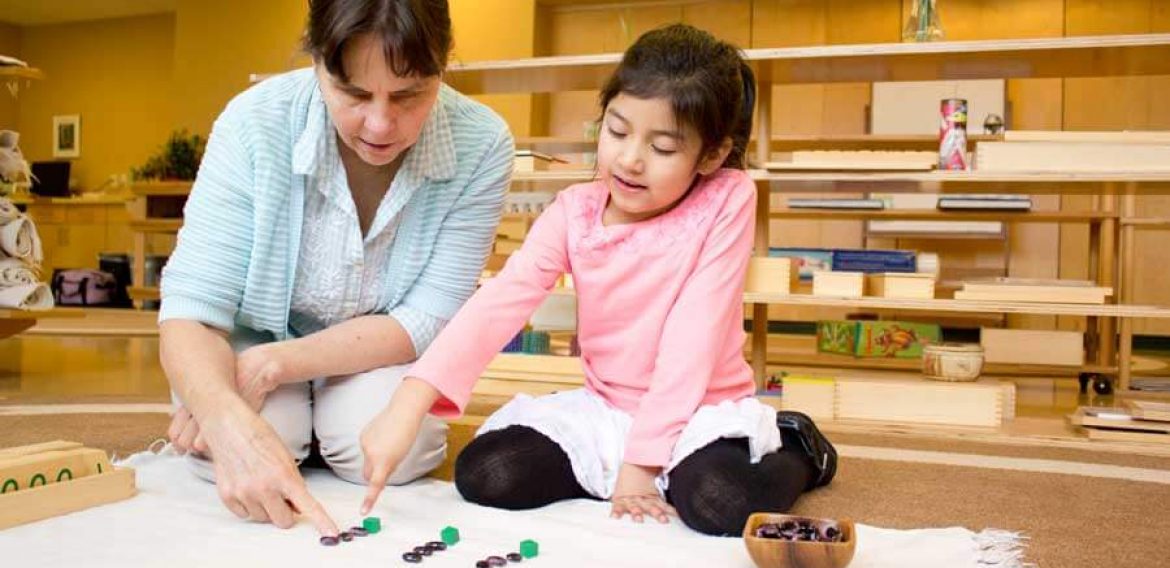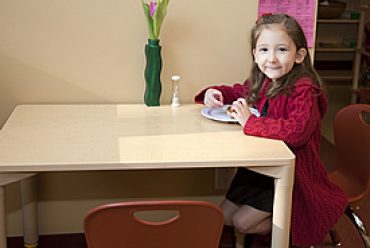Three Ways to Prepare Children for Their First Year at Living Montessori
The summer is coming to a close and a new school year is right around the corner! For Living Montessori students and children everywhere, that means it’s time to get ready for a new beginning. Whether your student is coming back to the school they’ve attended for a few years or is commencing their experience at a completely different school, there are many ways you can help children transition into the classroom setting. If you are looking for some tips on how to prepare your child for school, especially at Living Montessori, here are four ways to help you and your child make a smooth transition into the school year.
Talk About What To Expect
One of the easiest ways to prepare your child for a new school year is to talk with them about what to expect. If this is your child’s first time in a school setting, it’s important to explain what their experience will be like and answer any questions or address any concerns they may have. They will make new friends, learn new things, and maybe even try new foods. If your child is returning to school after summer break, try talking to them about friends and teachers they are looking forward to seeing, as well as other things that they particularly like about school such as their classrooms, playground, and more. Brainstorm about what new skills or concepts they may learn about in the upcoming year. There are tons of children’s books about the first day of school, reading some of these books with your child can be a fun place to start!
Familiarize Children With Their New Surroundings
Whether your child is going to a new classroom or a whole new school, unfamiliar settings can be a source of stress for children of all ages. Finding ways to familiarize children with their settings is a great way to eliminate anxiety on the first day of school. Visit the school if you can so that your child can start to visualize what they are going into. See if you can walk into their classroom, visit the cafeteria and see the playground. Walk them through the front entrance so they can “practice” what their first drop off will be like. If you are unable to visit the school itself, look together at the school website to see if there are any photos that might convey elements of what your child can expect to see. These things will go a long way in terms of supporting the child through decreasing the factors of the unknown.
Reinforce the Child’s Perception of Routine
Not knowing what is going to happen next can be a great contributor to anxiety for children, and going into any new setting brings about an element of fear that something might happen there that they aren’t prepared for. Regularity of routine is extremely important to young children, and it begins from the moment they wake up in the morning. Most likely, your child already has some type of established morning routine, like dressing, brushing teeth, and eating breakfast, so reinforce to them that these things won’t change. Then start to build their concept of what new routines will start to form after that. For example, how will they get to school, what will drop off look like, and in general, what will their day at school consist of? Very importantly, talk with them about who will pick them up at the end of the day, and how happy will you all be to reunite and talk about each other’s experiences. The school will focus on reinforcing their routines while they are there, but you can remind the child about your roles in their day. Routine is only learned through repetition, so your child will likely have to go through the same patterns a number of times before they start to internalize the fact that they can trust in their environment and in the people who play prominent roles in their lives. Your job is to make sure that the routines and the messages stay consistent in order to allow the child to build that trust and thereby release their anxieties of the unknown.
Encourage Independence In Their Daily Activities
Independence is at the root of all activities in the Montessori curriculum. Giving your children more independence in their daily tasks is a great way to prepare them for our curriculum in particular. Some places in which to incorporate independence in day to day activities for your children include:
Eating snacks and meals

Giving children a bit more freedom with their eating habits is a concrete way to foster their independence. For older children, this may mean having snacks available they can eat at their own discretion, asking their input on what to eat for dinner, and letting them help with basic meal preparation. For younger children 22 months to about three years old, letting them hold their own utensils and feed themselves when appropriate is another way to help them foster independence. Plan enough time to allow the child to be independent with their eating, trust in them that they have a natural ability to recognize their own point of satiation, and resist that urge to feed them in order to satisfy your need rather than theirs.

Getting dressed
You can help your child dress more independently by giving them some freedom of what to wear. One way to do this might be to limit the number of outfits to just two or three and then let the child choose from those. Narrowing down a child’s options is often a way to help children feel successful and develop an appropriate sense of control in their worlds. Gradually helping your child transition into picking their own clothing items and dressing on their own is a great way to foster independence.
Cleaning up after themselves

Teaching children from a young age the importance of putting away their belongings after playing with them is a great way to help them develop independent habits as toddlers and young children. In a Montessori setting, as well in many other academic environments, children learn that they may not start a new task or game before finishing up and putting away their previous one. Having a designated space where each item, book or toy goes appeals to children’s need for order, and it promotes their independence in knowing that something will always be in the same spot when they want to find it. To learn more about the Living Montessori Education Community in Bellevue, visit our website today!







